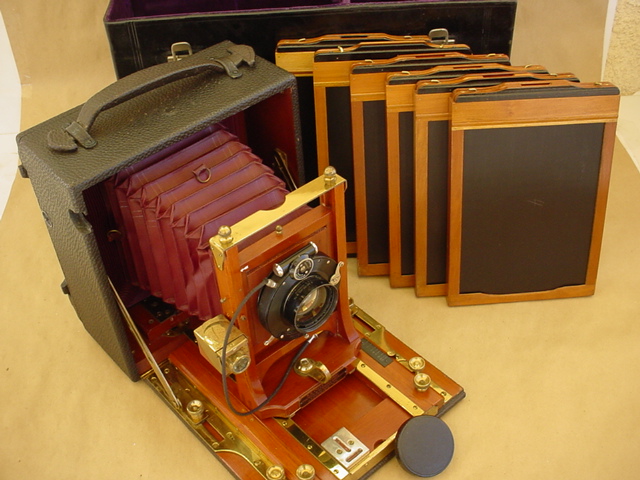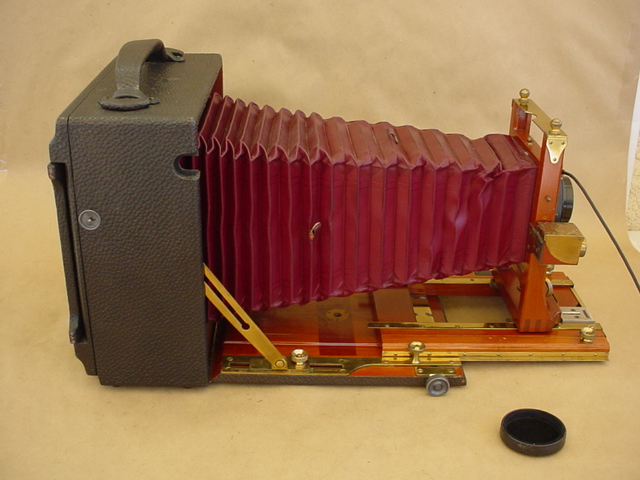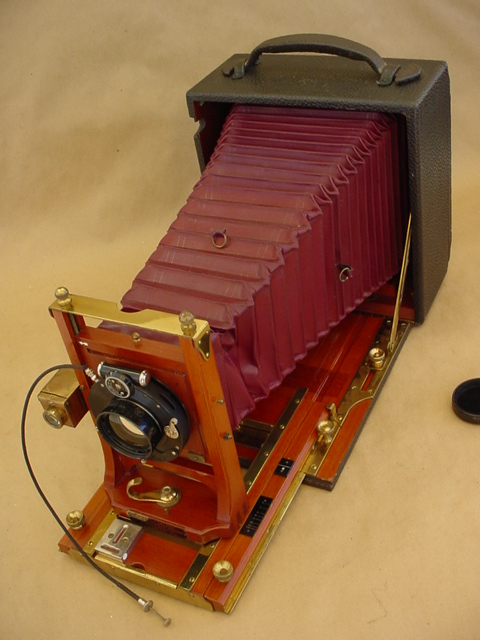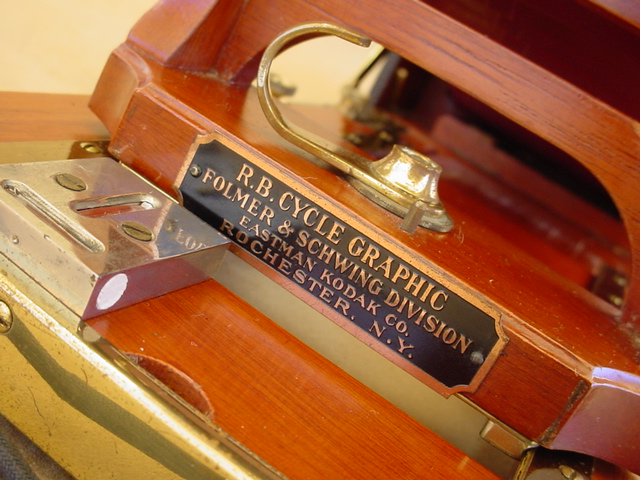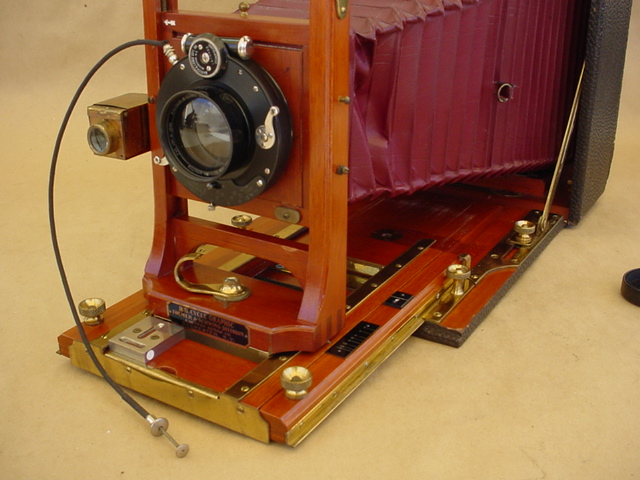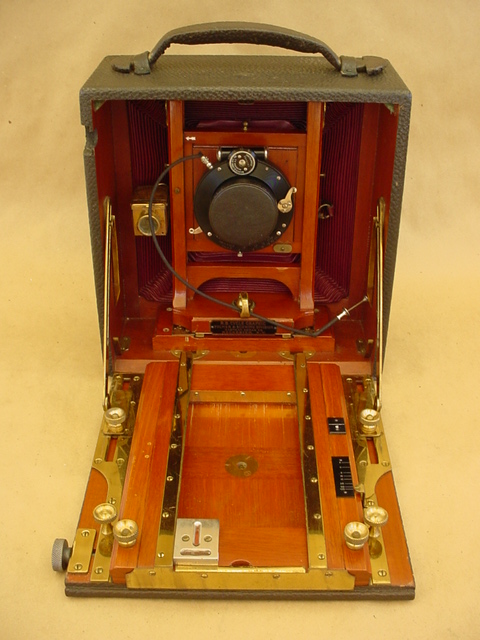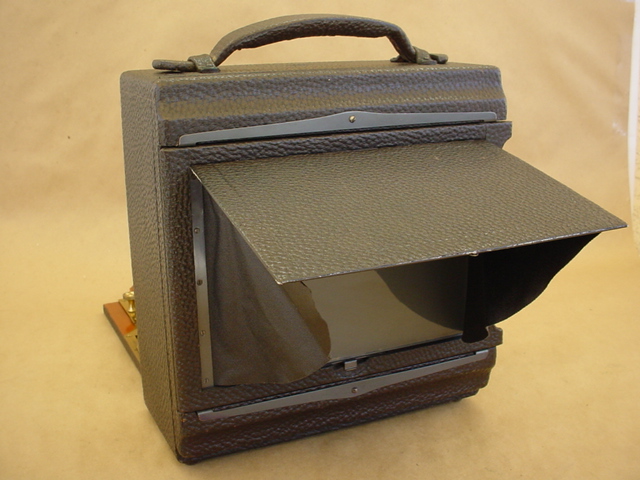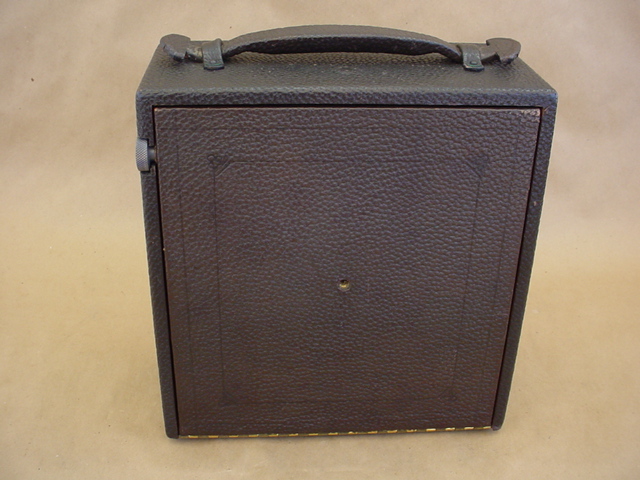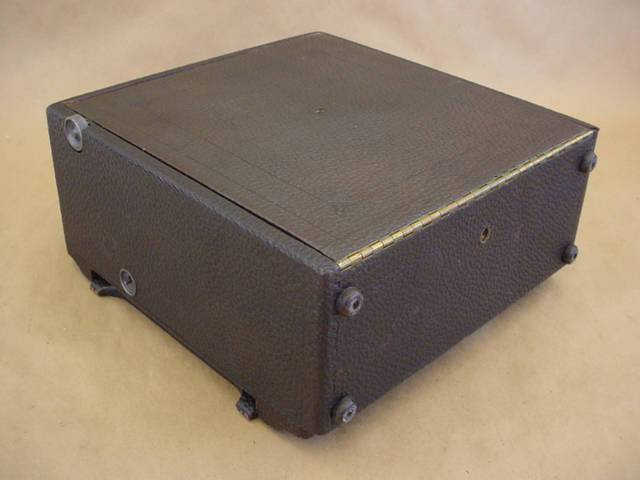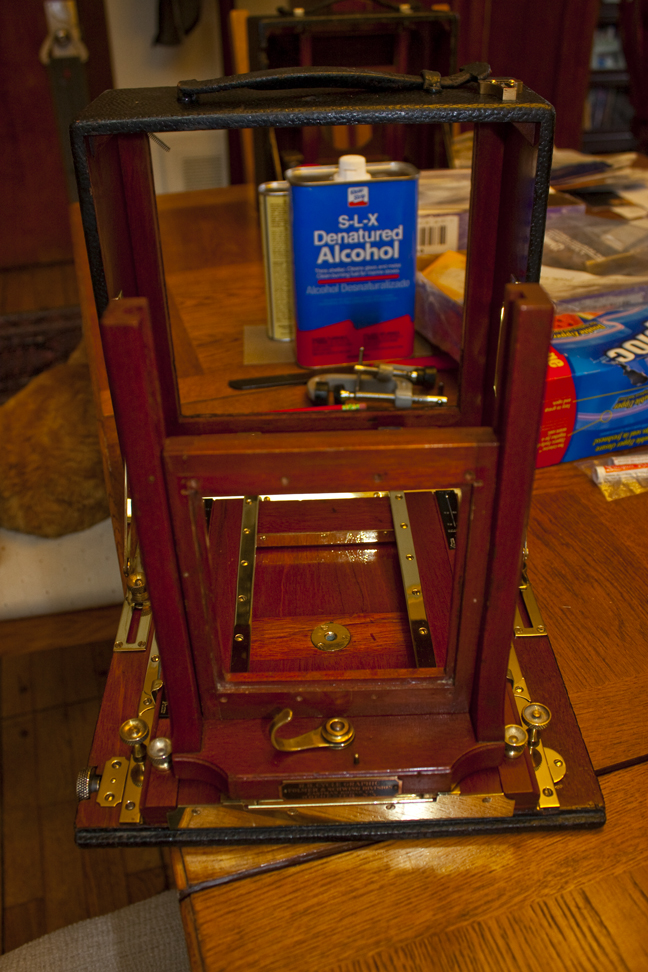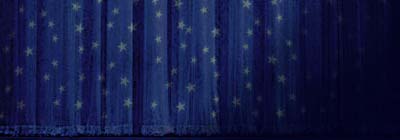
|
Circa 1922 #8 Cirkut Camera I'm restoring |
|
Panorama camera technology came into being in the mid 1800's. However, the Cirkut Camera, a rotating panoramic camera, wasn't patented by William J. Johnston until 1904. Cirkut cameras and attachments were designed to take panoramic pictures in various widths and lengths up to 360 degrees -- although taking a full 360 degree panorama wasn't recommended. Cirkut Cameras were manufactured by the Rochester Panoramic Camera Company starting in 1905. Prior to that, the Century Camera Company had been founded in 1900. In 1903 it was acquired by George Eastman. In 1905 Century took over the Rochester Panoramic Camera Company and first mentioned The Cirkut Camera in their 1906 catalog. In 1907 they became the Century Division of Eastman Kodak, and were merged into Folmer Graflex. From 1907 through 1915, Cirkut cameras and outfits were sold by The Century Camera Division of Eastman Kodak Company (EKCO) using Century model cameras. From 1915-1917, Cirkuts were sold by the Folmer & Schwing Division (F & S. Div.) of EKCO using the R.B. Cycle Graphic camera. The name was again changed in 1917 to the Folmer & Schwing Department. In 1926 EKCO was forced to divest itself of the department and the Folmer Graflex Corporation took over the assets. Thus the nameplates on Cirkut Cameras are generally indicative of when the were made, and by which Division of Eastman Kodak. Manufacture of Cirkut Cameras continued through 1945. There were several models made: No. 5, No. 6, No. 8, No. 10, and No. 16, named according to the maximum width of the film used in inches. The length of film, corresponding to the width of the panorama, varied by model also, ranging up to 20 feet for the No. 16. A #8 camera could use 5" or 6" film of course, and a #16 could use 8", 10" and 16" film, etc. The camera is made of mahogany with bellows made of red leather. The entire outside of the Circut is covered in black leather. All glides, catches, screws and rails are made of brass. The pictures below are of a classic museum quality 5x7 RB (Revolving Back) Cycle Graphic field camera. When paired with a 6" Cirkut back (attachment), the total package would be a #6 Cirkut Camera Outfit.
The other Cirkut cameras, #5, #10 and #16 where not combined with RB Cycle Graphic field cameras, and were essentially a one piece panorama camera which could only be used for taking panorama photographs. Cirkut cameras were real money makers for photographers. The Goldbeck Company in Texas, specializing in school panorama pictures, still uses a #10 Cirkut Camera. Here is a picture of Eugene Omar Goldbeck on top of a ladder making a panorama. He was know for shooting military panoramas with casts of thousands. The lens used on the Cirkut Camera is 'convertible,' which means that the front and rear elements can be unscrewed, removed and rearranged (front element in back, back element in front, or an element removed) to give three different focal lengths. The standard lens on the #6 was a Graphic Rapid Rectilinear with a focal length of 8". The rear element alone had a focal lenght of 14". The lens that came with my #8 6.5x8.5 full or whole plate (Whole plate is 6-1/2 x 8-1/2 inches and was the UK standard professional size 50+ years ago) Revolving Back (RB) Graphic field camera with Cirkut back attachment, was a Turner Reich Anastigmat 18 inch F:6.8 Series II 6-1/2 x 8-1/2 No. 4 May 14, 1895 lens, made by Gundlach-Manhattan Optical Co. of Rochester (10.5", 18" & 24") in a Compound Shutter -- a Betax No. 3 -- which was essentially a copy of the Bausch & Lomb Zeiss Protar Series VIIa #12, which itelf was a copy of the Zeiss Protar. For use with the #8, the 3 in 1 convertible lens gives a 10" wide angle, am 18" normal and a 24" telephoto. Not quite as handy as a modern zoom lens, but not bad for 1905. The camera rotates on a turntable-style tripod head made of cast aluminum with small brass wheels which roll on a polished chrome disc as the camera rotates. Surrounding the tripod head is a large planetary gear into which a smaller drive gear fits. The drive gear has a specific number of teeth, which relates to the lens focal length, the focused distance, and the advancement rate of the film. Choosing this gear properly is critical to the success of the resulting photograph, among other things. Each focal length lens generally has a set of three gears with it to accomodate different focusing distances. The gear is driven by a heavy duty wind up clock spring built into the Cirkut back, which in the case of the #8, can be removed from the the camera and be replaced by 6.5" x 8.5" (whole) cut sheet film back, thus making the #8 a convertable Cirkut/View camera as well. The exposure is controlled by varying the speed of the motor via a governor system. Exposures can be set from 1/2 second to 1/12th of a second. (for those really bright days!) The film is pulled by the same motor, past a slit in the back of the camera where the lens is focused to. This is where gear selection is critical, the film must be pulled at exactly the same speed as the the rotation of the camera in order for the image to be sharply recorded on the film. The film is taken up on a large drum inside the camera, this drum has a clutch system between it and the very strong motor which is controlled by way of a thumb screw. The clutch can be allowed to loosen when rewinding the film and may prevent damage to the motor should the film jam or the drum become stuck while the camera is in motion. Film for the #8 is 8 inches high by varying lenghts. Of course, Kodak no longer makes Cirkut film, so one must rely on other sources. The camera can be loaded in the daylight as it has a paper leader which is light tight. The exposure is started and stopped by a mechanical hand switch on the back of the camera. This switch removes a leather 'brake' from the motor system which allows rotation and also opens the slit that covers the film plane. The camera is allowed to rotate as long as the photographer wishes and is stopped by once again flipping the switch which brakes the motor and closes the slit to end the exposure. If left to rotate, the camera is capable of taking 360 degree photographs without edge distortion or perspective problems on a single roll of film. Development of the film is done in large trays. The film, no longer made by Eastman Kodak, which is about to go out of business at worst, or chapter 11 at best, but is now available from Ilford once a year by special ULF (Ultra Large Format) order. The red leather bellows on my camera had fallen apart in places and was full of holes, so I set about replacing it. I had a new red hypalon bellow made, but before I resort to it I'm determined to make my own bellows. My attempts and making my own ground glass didn't turn out so well, and I purchased a professionally made new ground glass. It took over six months to find a whole piece of leather large enough to construct the bellows from. Keep in mind that when these cameras were first made, sheep were raised for their hides and people ate mutton. Today people eat lamb and so sheep do not get big enough to produce a full hide large enough for bellows construction. That said, I found a hide that is both large enough and thin enough for bellows construction and hope to finish restoring the camera in 2012.
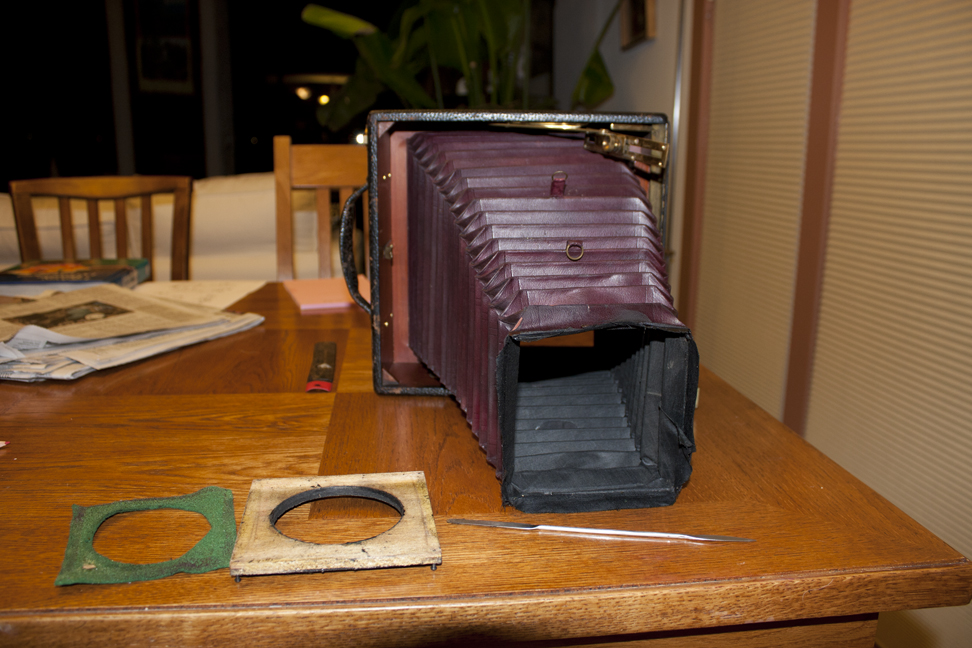
#8 Cirkut Camera red leather bellows with lens board removed
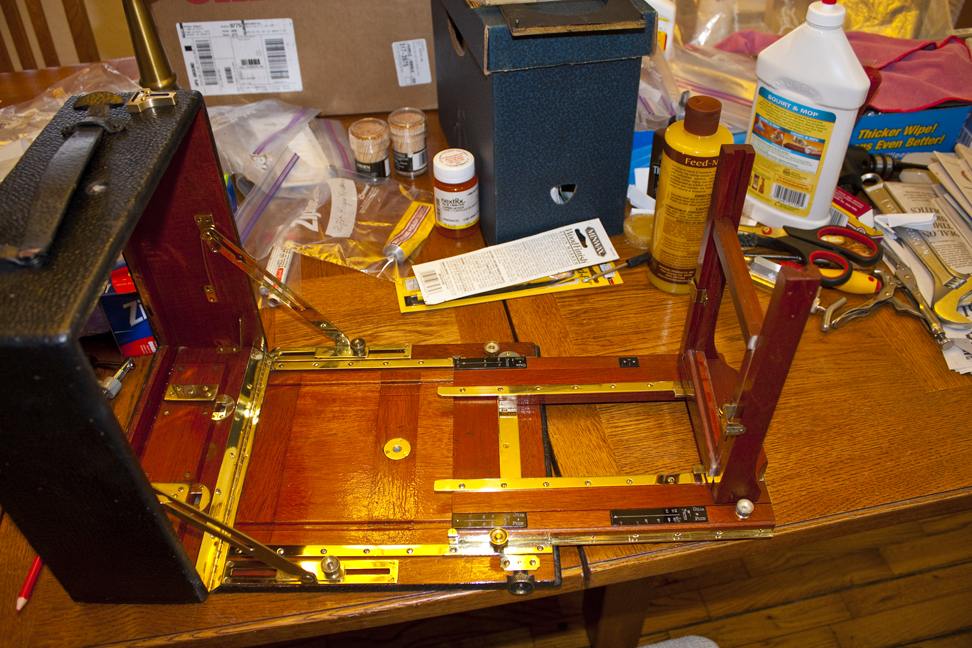 SIde view of restored Cirkut Camera frame without bellows and ground glass 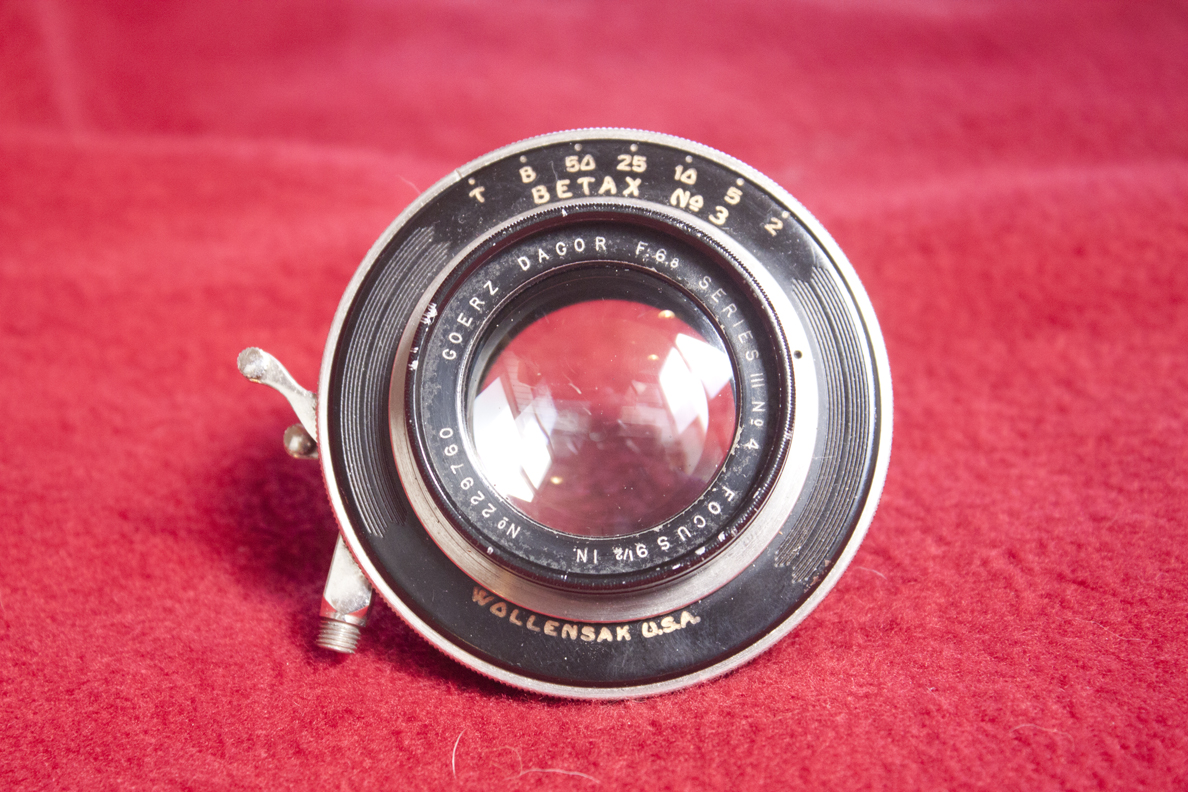 Convertible lens in shutter
© 2011 Loren Latker
|
||
